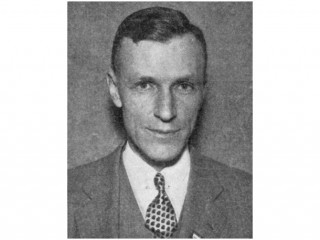
William P. Murphy biography
Date of birth : 1892-02-06
Date of death : 1987-10-09
Birthplace : Stoughton, Wisconsin,U.S.
Nationality : American
Category : Science and Technology
Last modified : 2011-12-17
Credited as : Physician, Liver therapy for pernicious anemia, Nobel laureate
1 votes so far
As a young man, William Murphy's only interest was in practicing medicine, but he could not afford tuition to medical school. Instead he taught math in public schools, saving from each paycheck for eventual admission to the University of Oregon Medical School, where, after one year of study, he was unable to afford his second year's tuition. He spent two years in the Army, before discovering and applying for a peculiar fellowship at Harvard, endowed by 1885 alumnus William Stanislaus Murphy (no relation) specifically to help fund "collegiate education of men of the name of Murphy." The fund for Murphys has since been depleted, but it allowed William Murphy to become Dr Murphy in 1922.
He then practiced in Boston and taught at Harvard, where he was drawn into research into research on diabetes mellitus and pernicious anemia. Working with Dr George R. Minot, Murphy noted that anemia patients showed marked improvement when they were fed large quantities of liver. This so-called "liver therapy" made an often-fatal disease into an easily treated malady, saving many thousands of lives. Subsequent research isolated vitamin B12 from liver, as a successful therapy for anemia. For this, Murphy, Minot, and George H. Whipple shared the 1934 Nobel Prize.
His wife, Pearl Harriett Adams Murphy, was a descendant of US President John Adams, and she became the first licensed female dentist in Massachusetts. Their daughter Priscilla showed a great interest in aviation, but was killed at 16 when a small plane she was piloting crashed. Their son, William P. Murphy Jr, was, like his father, a doctor of some renown. He designed and constructed the first dialysis machines, improved the engineering on blood bags used during transfusions, and in 1957 he founded the Medical Development Corporation, which became Cordis Corporation and is now owned by Johnson & Johnson. Cordis built the first physiologic cardiac pacemaker, among numerous other medical innovations.
The younger Dr Murphy, working with his friend Dean Kamen, also founded FIRST (For Inspiration and Recognition of Science and Technology), a non-profit group dedicated to inspiring young people's interest in science, technology and engineering.
















